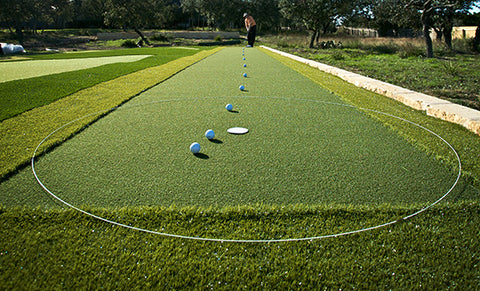When it comes to golf, the importance of a well-executed putt cannot be overstated. While shorter putts may seem more straightforward, it's the long-distance putts, known as lag putts, that truly test a golfer's skill and precision. In this blog post, we will delve into the art of lag putting and provide you with valuable tips to help you improve your game on the greens.
What is a Lag Putt and Why is it Important?
A lag putt is a long-distance putt typically used when the golfer is too far from the hole to make a direct shot. The primary objective of a lag putt is to get the ball as close to the hole as possible, setting up an easier, more manageable second putt. Mastering the lag putt is crucial for reducing the number of strokes taken on the green and ultimately improving your overall score.
Tip #1: Focus on Distance Control
One of the key elements of a successful lag putt is distance control. To achieve this, it's essential to develop a consistent and reliable putting stroke. Practice your stroke on the practice green, paying close attention to the length of your backswing and the speed of your follow-through. By honing your distance control, you'll be better equipped to judge the power needed for lag putts on the course.
Tip #2: Read the Green Carefully
Understanding the contours and slopes of the green is crucial for lag putting. Take your time to carefully read the green before making your putt. Look for any subtle breaks or undulations that may affect the ball's path. By analyzing the green's topography, you can make more accurate judgments about the direction and speed of your lag putt.
Tip #3: Aim for a Three-Foot Circle
When lag putting, it's unrealistic to expect the ball to stop right next to the hole every time. Instead, aim for a three-foot circle around the hole. By focusing on this target area, you increase your chances of leaving yourself with a manageable second putt. Remember, the closer you can get the ball to the hole, the better your chances of sinking the next putt.
Tip #4: Develop a Consistent Putting Routine
A consistent putting routine can help you maintain focus and composure during lag putts. Find a routine that works for you and stick to it. This could involve taking a few practice swings, visualizing the putt, or adopting a specific stance. By following the same routine for every putt, you'll develop a sense of familiarity and confidence that can greatly improve your lag putting performance.
Tip #5: Practice, Practice, Practice
As with any aspect of golf, practice is key to mastering the lag putt. Set aside dedicated practice time to work on your lag putting skills. Experiment with different techniques, grips, and putters to find what works best for you. The more you practice, the more comfortable and confident you'll become when faced with a lag putt on the course.
Improving your lag putting skills takes time and effort, but the rewards are well worth it. By focusing on distance control, reading the green, aiming for a three-foot circle, developing a consistent routine, and dedicating time to practice, you'll be well on your way to becoming a master of the lag putt. So, head out to the green, put these tips into action, and watch your golf game soar to new heights!




